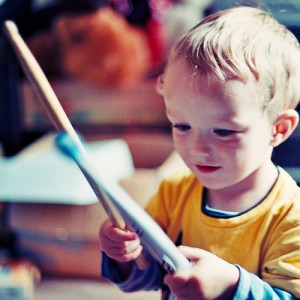Developing a “Good Sense of Rhythm”
 Developing a good sense of rhythm is one of the most challenging parts of being a piano teacher. It’s not something that arrives overnight, and it’s something that must be maintained as the student advances to music with more advanced rhythms and time signatures. It truly is something that must bedeveloped.
Developing a good sense of rhythm is one of the most challenging parts of being a piano teacher. It’s not something that arrives overnight, and it’s something that must be maintained as the student advances to music with more advanced rhythms and time signatures. It truly is something that must bedeveloped.I’d like to suggest that there are three components to having and developing what we so loosely refer to as a “good sense of rhythm”:
- A sense of beat. This means the ability to maintain a steady beat/pulse. This is probably the most common and most basic problem that students encounter when it comes to rhythm issues in their piece. The inability to maintain a steady beat/pulse is crucial for developing #’s 2 and 3 below.
- A sense of rhythm (i.e., note values). This involves being able to accurately identify and execute the various note values within a variety of tempi. Beginner students may struggle with placing eighth notes within a quarter note beat, while more advanced students may struggle with syncopated rhythms or playing 2 against 3. It is nearly impossible to develop a sense of rhythm without first developing a sense of beat (#1 above).
- A sense of meter. This may very well be the most elusive component of the three. At the most basic level, issues with proper sense of meter will evidence themselves when, for example, a student fails to maintain 3/4 time by extending the third beat so that they are actually in 4/4 time (a common issue among beginners). At more advanced levels, issues with proper sense of meter will evidence themselves when, for example, a student feels cut time (2/2) as common time (4/4), or feels 4/4 or 3/4 time as more like 1/4 (not uncommon in Bach’s contrapuntal pieces). Losing sight of the meter is like failing to see (or feel) the big picture.
When student has a rhythmic issue in one of their pieces, it can be really beneficial to further identify which of the three components above may be lacking and causing the issue in this case. An issue in understanding what a half note means is quite different from an issue with keeping a steady beat, for example! The teacher would solve these issues quite differently.
On a bit of a tangent — all this talk about rhythm is one of the reasons why I’d love to be able to offer pre-piano / early childhood music group classes someday (once set up a studio in my own home rather than teaching on campus). Offering these kinds of classes allows the students a chance at musical development before they may be ready for private lessons with a teacher. And these classes are a perfect opportunity to begin developing good senses of rhythm! Developing a sense of beat (#1 above) can be done with activities involving tapping, clapping, or walking the beat while singing and moving. Soon after, students can begin echoing and creating various rhythms within the steady tempo to begin absorbing how note values (#2 above) work. And, of course, the teacher will present these rhythm activities within certain meters/time signatures (#3). Although the students may not yet be at the point where they can understand what a time signature means, they can at least begin absorbing and feeling what these meters sound and feel like. All these things are great foundations for taking lessons later on!
These kinds of activities are not only for early childhood, though. They would also work well for monthly group lessons with students ages 5-7 (but probably not any older, depending on the activity) who are already taking private lessons.
There are many ways to develop a good sense of rhythm in students! The most important thing? Showing students that rhythm can be fun! =)
From





I'm visiting from We Teach. My husband is a musician. He has found fun ways to teach our three children and myself a little about rhythm. Our nine year old seemed to just have rhythm naturally. He plays the drums and learned quickly.
ReplyDeleteThe other night we all played a song together trying to listen to each other and stay together. It was a blast. The song was something my husband and oldest son created together. They simplified it and gave the rest of the family simple parts to eight measures with a few changes in the 7th and 8th. We had drums, two guitars, a piano, and a bass guitar. I think I'm starting to understand music for the first time. I joined your we teach group and I'm following this blog.